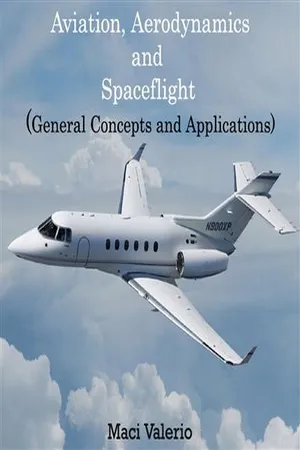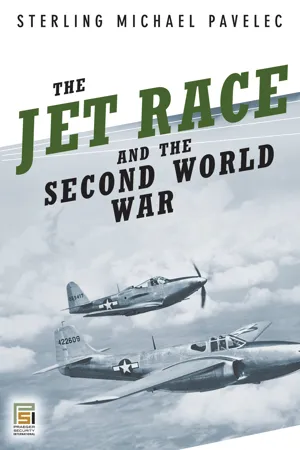Technology & Engineering
Airplanes
Airplanes are fixed-wing aircraft that use forward motion and lift from wings to fly. They are a key mode of transportation for both passengers and cargo, and have revolutionized global connectivity and travel. Airplanes are designed with advanced engineering and technology to ensure safety, efficiency, and performance in various flight conditions.
Written by Perlego with AI-assistance
Related key terms
1 of 5
3 Key excerpts on "Airplanes"
- No longer available |Learn more
- (Author)
- 2014(Publication Date)
- University Publications(Publisher)
____________________ WORLD TECHNOLOGIES ____________________ Chapter- 1 Aircraft An Airbus A380, the world's largest passenger airliner ____________________ WORLD TECHNOLOGIES ____________________ A hot air balloon (aircraft) in flight. Aircraft are vehicles which are able to fly by being supported by the air, or in general, the atmosphere of a planet. An aircraft counters the force of gravity by using either static lift or by using the dynamic lift of an airfoil, or in a few cases the downward thrust from jet engines. Although rockets and missiles also travel through the atmosphere, most are not considered aircraft because they use rocket thrust instead of aerodynamics as the primary means of lift. However, rocket planes and cruise missiles are considered aircraft because they rely on lift from the air. Another type of aircraft is the spaceplane which is an aircraft designed to fly up to extreme altitudes into space and land as a conventional aircraft. ____________________ WORLD TECHNOLOGIES ____________________ The human activity which surrounds aircraft is called aviation . Manned aircraft are flown by an onboard pilot. Unmanned aerial vehicles may be remotely controlled or self-controlled by onboard computers. Target drones are an example of UAVs. Aircraft may be classified by different criteria, such as lift type, propulsion, usage and others. History The history of aircraft development divides broadly into five eras: • Pioneers of flight • First World War • Inter-war, sometimes called the Golden Age • Second World War • Postwar era, also called the jet age Methods of lift Lighter than air – aerostats Aerostats use buoyancy to float in the air in much the same way that ships float on the water. They are characterized by one or more large gasbags or canopies, filled with a relatively low density gas such as helium, hydrogen or hot air, which is less dense than the surrounding air. - eBook - PDF
- George Dekoulis(Author)
- 2020(Publication Date)
- IntechOpen(Publisher)
The military also realized the advantages of having an offensive and defensive air power during the war and peace time. Today air power has become the essence of military supremacy of any country for maintaining country sovereignty during peace time and offensive attack capability to win war by destroying enemy vital installations, deterring troop transfer and military supplies. The aircraft can be broadly categorized as lighter-than-air aircraft (balloons and airships) which generate lift due the buoyancy forces and heavier-than-air aircraft (aircraft, helicopters and UAV). 2. Principles of flight An aircraft is a complex machine using the application of multidisciplinary engineering sciences. The major engineering groups can be indicated as follows: a. Aerodynamics and flight mechanics determining aircraft shape, configuration and control law b. Airframe structure (fuselage, wings, vertical and horizontal tail planes and control surfaces) Military Engineering 2 c. Mechanical system (hydraulics, pneumatics, landing gear, fuel and flight control systems) d.Engine/power plant system e. Electrical system (power generations, distribution and emergency power) f. Avionic (communication, navigation, weapon aiming, displays and warnings and utility management system) and instrument system g. Environmental systems (air-conditioning, life support system and cabin pres-surization systems) h.Armament system (for military aircraft) i. Air egress (ejection) system j. Software (embedded as well as operational software) 2.1 Atmosphere For the aerodynamic study, air is considered an ideal gas which follows gas laws. Therefore, the variation of air properties with respect to altitude is impor-tant. The International Standard Atmosphere (ISA) is used for comparison of performances of aircraft designed by different countries. - eBook - PDF
- S. Mike Pavelec(Author)
- 2007(Publication Date)
- Praeger(Publisher)
Introduction: The State of Aeronautical Engineering and Aircraft Technology in the World, 1919–1939 The years between the end of the Great War and World War II saw swift and unprecedented change in aviation technology. Change was particularly rapid in the 1930s when aviation was shaped by a number of factors. The plane had proven itself as a viable weapon in the Great War, and was developed following the war based more on its potential than on the realities. During the interwar period, the evolution of the airplane for military and civilian uses continued and expanded. While nascent national programs instituted commercial flights, funded by passengers and mail, sport flying also became popular. Initially a rich man’s hobby, flying had wide appeal and interest. New companies were born and died in an attempt to expand man’s domination of the air. Pilots flew and crashed as new technologies were tested. Records were set and broken as airplane evolution progressed. The science of aviation was put into practice and taught in a number of different ways—ways that differed according to national proclivities and governmental support, or lack thereof—as military and civilian programs alike discovered the potentialities of powered flight. During the course of the Great War, the airplane became a viable weapons platform as well as a more expedient mode of transportation. Experiments during the war proved decisively that the airplane was useful in a number of new roles and operations. The plane was used for observation and liaison, as an air-to-air fighter, for antishipping, and for aerial bombing. The plane was used from land bases, over land, over the sea, and from newly constructed aircraft tenders and carriers. During the war, the plane was used 2 The Jet Race and the Second World War to project the war against the civilian populations of all of the belligerents— save the Americans—in the form of “strategic” bombing.
Index pages curate the most relevant extracts from our library of academic textbooks. They’ve been created using an in-house natural language model (NLM), each adding context and meaning to key research topics.


